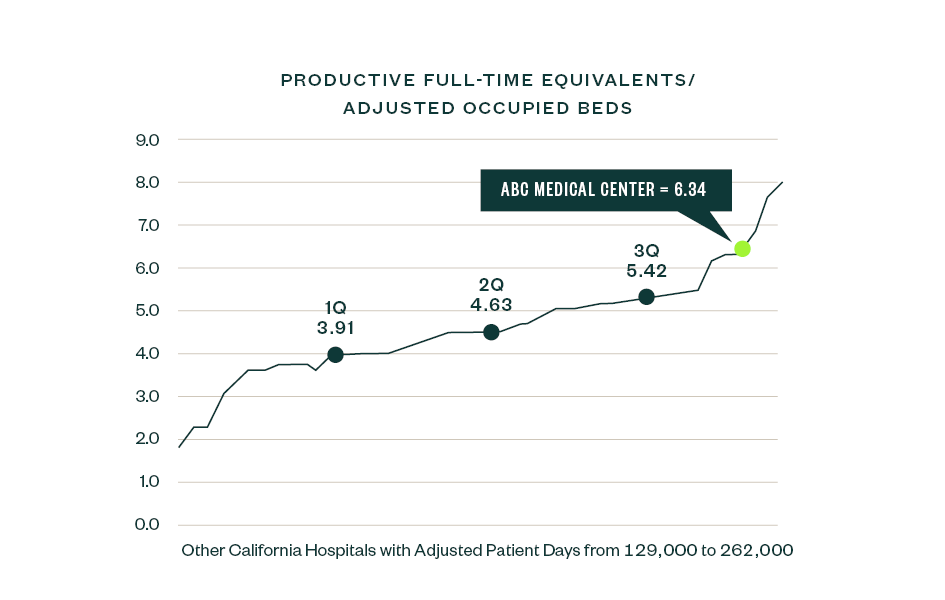
A version of this article previously ran in the April 2021 edition of Healthcare News.
Health care leaders endured a challenging 12 months following the outbreak of the COVID-19 pandemic, potentially the most trying of their careers. As the other side of the pandemic approaches, hospitals that survived its financial toll can begin to evaluate how to recover and improve their financial performance as well as prepare for their organization’s long-term financial stability.
While hospitals in different regions will continue to experience varying consequences from the pandemic, your organization can start developing thoughtfully crafted plans to position for a more stable world, now.
Below, we outline strategies for the future and explore how focusing on your workforce can help you plan for what’s next.
What Labor Factors Should Hospitals Keep in Mind?
Labor costs typically make up 50%–55% of a hospital’s operating expense structure; focusing on labor expense should be a top priority to position your organization to meet current and future needs.
Fortunately, improving labor productivity doesn’t necessarily equate to reducing your workforce.
It does, however, require a serious analysis of financial performance; labor costs; productivity benchmarking against peer hospitals; and thoughtfully designing, communicating, and deploying performance improvement tactics throughout your organization.
What Pitfalls Should Hospitals Avoid While Planning for Recovery?
Common mistakes can arise while executing a large financial improvement initiative or turnaround project, and these mistakes strongly correlate with project failure or significant underperformance.
Common Leadership Pitfalls
The following gaps in leadership oversight can significantly hinder your initiative’s potential:
- Lack of visible leadership and failure to act as passionate project champions
- Underinvestment in project management, communications strategy, and resources
- Failure to acknowledge management team weaknesses and address low performers upfront
- Inability to hold management accountable for failing to meet their respective targets
- Lack of engagement with key stakeholders in all phases of the project
- Failure to evaluate and address so-called sacred cows which have a negative bottom-line impact
- Plans for across the board reductions to simplify the process, which are frequently counterproductive for well-run departments and unsustainable
If your leadership team can commit to avoiding these common pitfalls, embarking on a plan to improve your labor operating expenses can be easier to implement.
Operational Strategies to Drive Success
Here are some key take-aways to help drive your success:
- Commit to taking decisive action
- Use a structured, systematic approach
- Avoid pursuing solutions alone and recognize help is available
What Will Recovery Planning Look Like for an Organization?
Planning should take place over three phases.
Phase One: Conduct a Current Assessment
The first step to improving performance is to assess your current state. Current performance versus budget expectations is a critical indicator for your organization’s financial health.
